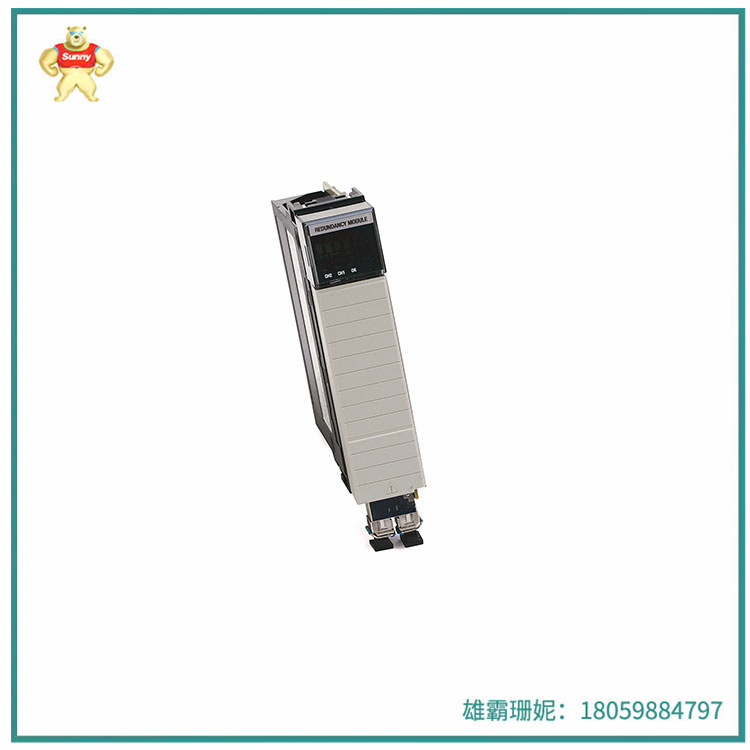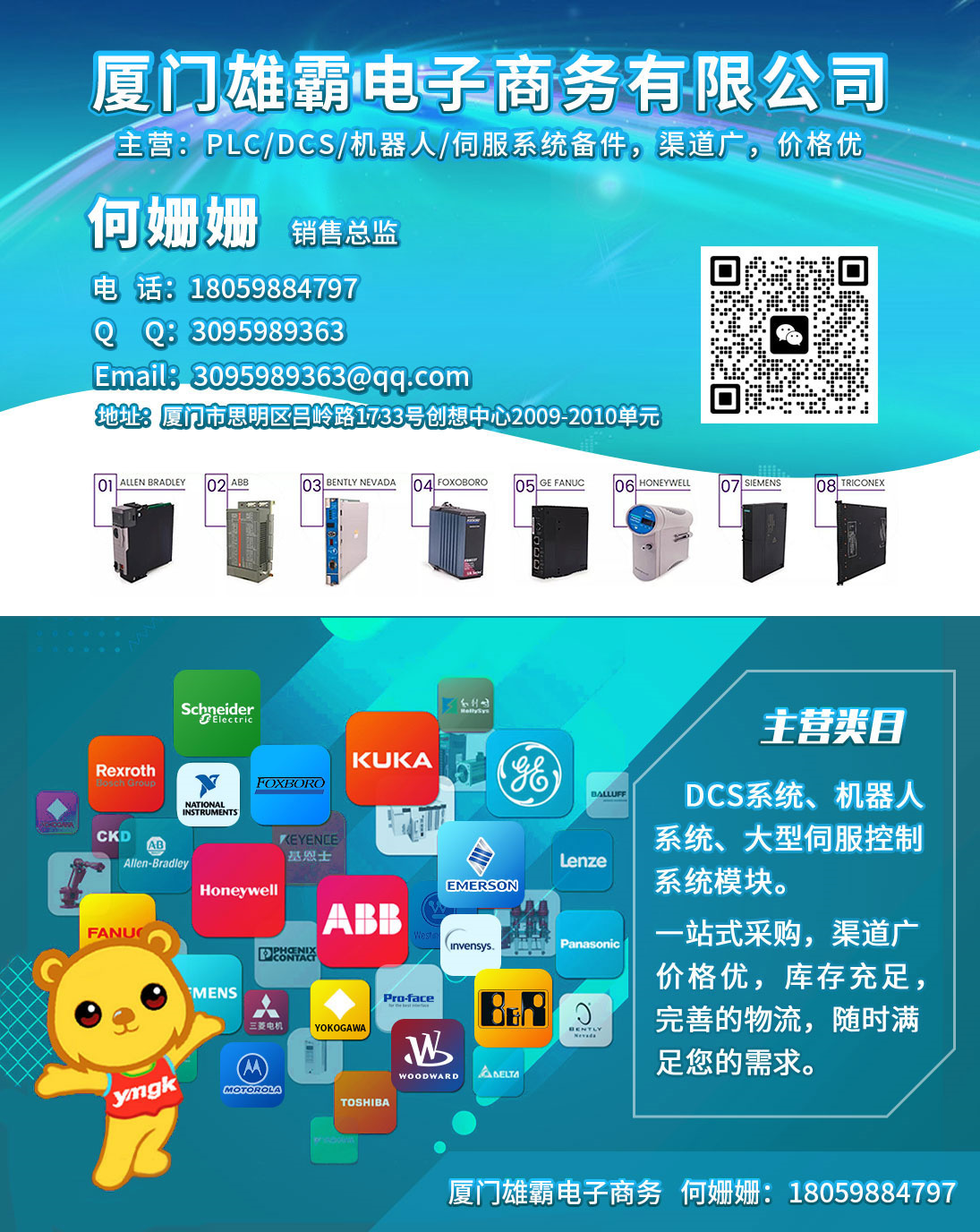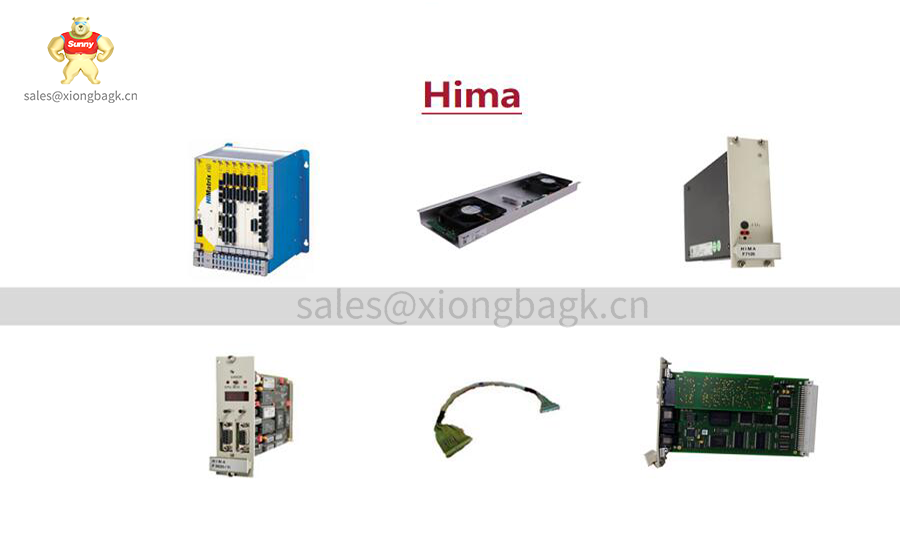
1756-RM2 冗余控制器(Redundant Controller)是指在控制系统中设置的备用控制器,用于在主控制器发生故障或失效时,能够自动或手动切换到备用控制器,以确保系统的连续运行。
1756-RM2 冗余控制器通常用于关键的工业控制系统、航空航天控制系统、医疗设备控制系统等领域,以提高系统的可靠性和稳定性。冗余控制器可以采用热备份、冷备份或温备份等不同的备份方式,根据实际需求和系统特点进行选择。
在冗余控制器系统中,主控制器和备用控制器通常具有相同的功能和配置,并且在正常情况下同时运行。当主控制器发生故障或失效时,备用控制器会自动或手动接管控制任务,以确保系统的连续运行。
1756-RM2 冗余控制器的引入可以有效地提高系统的可靠性和稳定性,但同时也增加了系统的复杂性和成本。因此,在设计和实施冗余控制器系统时,需要综合考虑系统的可靠性要求、成本效益和可维护性等因素。
冗余控制器通常采用以下几种方式实现故障切换:
1. 同步切换:在冗余控制器中,主控制器和备用控制器通常会通过实时同步的方式保持状态一致。当主控制器发生故障或失效时,备用控制器会自动接管控制任务,并继续执行主控制器的指令。这种切换方式通常是自动完成的,不需要人工干预。
2. 异步切换:在异步切换方式中,主控制器和备用控制器的状态并不同步,但备用控制器会实时监测主控制器的状态。当主控制器发生故障或失效时,备用控制器会通过检测到的异常信号自动接管控制任务,并继续执行主控制器的指令。这种切换方式也通常是自动完成的,不需要人工干预。
3. 手动切换:在某些情况下,备用控制器可能无法自动接管控制任务,或者需要人工干预来进行切换。在这种情况下,备用控制器会发出切换请求,人工确认后进行切换操作,将控制任务切换到备用控制器。
4. 混合切换:在混合切换方式中,主控制器和备用控制器的状态可以同步或异步,并且可以自动或手动进行切换。这种切换方式可以根据实际需求和系统特点进行配置,以满足不同的可靠性要求。
无论采用哪种切换方式,1756-RM2冗余控制器都需要具备快速、准确、可靠的故障切换能力,以确保系统的连续运行和稳定性。同时,在设计和实施冗余控制器系统时,需要综合考虑系统的特点和需求,选择合适的切换方式和策略。

1756-RM2 Redundant Controller refers to a standby controller set up in the control system to be able to automatically or manually switch to the standby controller in case of a primary controller failure or failure to ensure the continuous operation of the system.
The 1756-RM2 redundant controller is commonly used in critical industrial control systems, aerospace control systems, medical device control systems and other fields to improve system reliability and stability. The redundant controller can be selected in hot backup, cold backup, or warm backup modes based on actual requirements and system features.
In a redundant controller system, the primary and secondary controllers usually have the same function and configuration, and operate at the same time under normal circumstances. When the primary controller fails or fails, the secondary controller automatically or manually takes over the control task to ensure the continuous operation of the system.
The introduction of 1756-RM2 redundant controller can effectively improve the reliability and stability of the system, but also increase the complexity and cost of the system. Therefore, when designing and implementing a redundant controller system, it is necessary to consider the reliability requirements, cost-effectiveness and maintainability of the system.
Redundant controllers usually implement failover in the following ways:
1. Synchronous switchover: In a redundant controller, the primary controller and standby controller are in the same state through real-time synchronization. When the primary controller fails or fails, the secondary controller automatically takes over the control tasks and continues to execute the commands of the primary controller. This switching is usually done automatically and does not require human intervention.
2. Asynchronous switchover: In asynchronous switchover mode, the status of the primary controller and the standby controller are not synchronized, but the standby controller monitors the status of the primary controller in real time. When the primary controller fails or fails, the secondary controller automatically takes over the control task through detected abnormal signals and continues to execute the commands of the primary controller. This switching is also usually done automatically and does not require human intervention.
3. Manual switching: In some cases, the standby controller may not be able to automatically take over the control task, or human intervention is required to make the switch. In this case, the standby controller sends a handover request, manually confirms the handover operation, and switches the control task to the standby controller.
4. Hybrid switchover: In hybrid switchover mode, the status of the primary controller and the standby controller can be synchronous or asynchronous, and can be switched automatically or manually. The switching mode can be configured based on actual requirements and system features to meet different reliability requirements.
Regardless of the switching mode, the 1756-RM2 redundant controller requires fast, accurate and reliable failover capability to ensure continuous operation and stability of the system. At the same time, when designing and implementing the redundant controller system, it is necessary to consider the characteristics and requirements of the system comprehensively, and choose the appropriate switching mode and strategy.


| ABB | G3ESa |
| ABB | HENF318736R1 |
| ABB | G3FCb |
| ABB | HENF458568R1 |
| ABB | G3FD |
| ABB | HENF452692R1 |
| ABB | G3FE |
| ABB | HENF452697R1 |
| ABB | HENF452750R1 |
| ABB | E3EP |
| ABB | HENF315276R1 |
| ABB | E3ES |
Copyright © 2022-2024 厦门雄霸电子商务有限公司 版权所有 备案号:闽ICP备14012685号-33